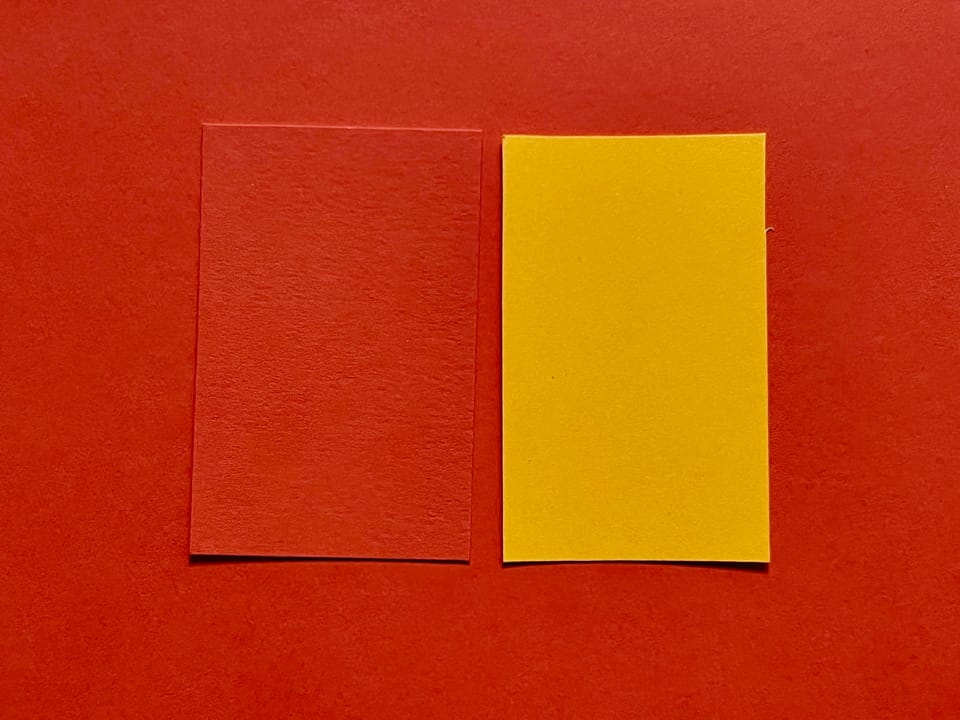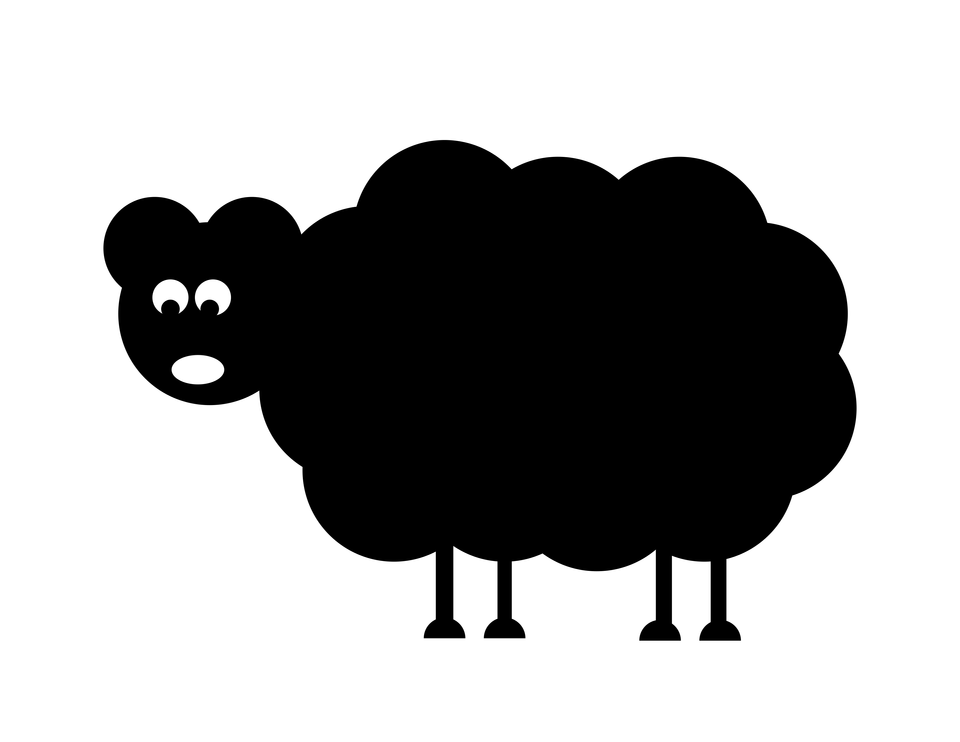Misunderstanding Portuguese Shepherds
The art of being completely lost in translation of citrus fruits.

I apologize for all the incorrectly transliterated Chinese in this newsletter, but as you'll see below, I wouldn't be the first.
This newsletter is all about the the etymologies of two citrus fruits: tangerines and mandarins. You will see that the Portuguese have a hand in both of those words.
This all started one night when I thought “I wonder if the word ‘tangerine’ is somehow related to the taste-descriptor of ‘tang’.” So I went to the internet, and discovered that tangerines were named as such because of Tangier, Morocco.
I thought “that is completely wrong.” I wasn't incorrect. While I didn't know it then, the Portuguese would come to play a significant part in the confusion.
- In languages with geographic-inspired names for oranges, most refer to China, but some refer to Portugal.
- For example, did you know that the word "mandarin" is actually Portuguese?
- It seems that "Mandarin" (oranges) was initially chosen as a synonym for "Chinese", not as a euphemism for "noble".
- Both "tangerine" and the Chinese name for the Mandarin orange are actually color words.
Orange Nomenclature
I’ve previously written about the etymology of the color orange. In that newsletter, I had made a distinction between languages whose word for orange, like pomme d’orange in French, which were based on the golden color of the orange, and languages like Spanish, from Arabic, whose word for orange, naranja, was originally based on the the fragrant smell.
Additionally, there were languages whose word for orange was based on the orange’s Chinese origins, like the Russian апельсин / applesin, the Swedish apelsin, or literally, Chinese apple.
Similarly, there are varieties of oranges with names based on their place of origin, like Seville or Valencia. Similar to champagne, the arancia rossa di Sicilia (red Sicilian orange) has protected geographical status, so anywhere its just a blood orange, unless you are in Spain and then its a Sanguinello. And the Brazilian umbigo or navel orange is named such because it appears to have a umbilical cord or belly button.
I should point out that modern Greek has a different word for the fruit, πορτοκάλι or portokali, from Portugal.
Tangerines
Are tangerines from Tangier? No. Just wanted to get that out of the way.
Tangerines are a small tangy citrus fruit, which conventional etymologies explain that they are named such due to being to somehow related to Tangier, the city in Morocco. At first blush, this seems completely plausible. Tangier was part of the same Al-Andalus (Umayyad Empire) which likely introduced citrus fruits to Europe in the first place. Another Andalusian city, Seville, was the original source of bitter oranges to the rest of Europe, which was turned into marmalade for the denizens of the British Isles to eat with toast, be they man or fictional bear. Note that during this period of time, it was most likely that people did not see the actual oranges, rather only the jellied preserves and the candied rinds. They were, in fact, suggested to not eat raw oranges.
This is a quote from a book which was published in 2023:
Concerning the etymology of the word tangerine, it originated in the mid-nineteen century and referred to the Moroccan mandarin hybrids imported by Major Atway. These hybrids were shipped to the mainland United States through the port of Tangiers, hence their name (Hume 1913).
It’s wrong, but it’s nice to know what people think. There isn't a single correct fact in this entire paragraph.
Why are tangerines actually called tangerines?
During the 15th century, the Portuguese travelled to Brazil and decided that that it belonged to them.
To quote from the Encylopedia of Genocide:
On the Atlantic coast, the process began in 1549 with the landing of Portugal's Pedro Alvar Cabral in what is now Brazil. Over the next decade, Alvar systematically eradicated the Tupi, Tapuya and other coastal peoples, enslaving the survivors. By 1570, a pattern was set wherein the colonists, working from secure bases along the coast, encroached bit by bit into the vast and heavily-jungled Amazon interior, destroying each native society encountered along the way. All told, it is estimated that less than 10 percent of Brazil's original 2.5 million indigenous inhabitants survived into the 1600s.
– Encyclopedia of Genocide, 2000
Among the many natural delights in Brazil, they discovered a fruit which reminded them of the oranges they knew of from China. A red-hued bird was described as a pytang in Old Tupi. And Pitanga was related to “'ybapytanga” a tree with red fruit. In fact, tang had a connotation of red, even in the language of the people who had lived in Virginia before the British decided to intrude.
This word would become borrowed as tangerina.
Confused Floridians
But by the end of the 19th century, people in the Florida were under the mistaken understanding that the local tangerine trees were imported from Morocco, leading to the Tangier-inspired name, when in fact, they were imported all the way from Algiers, Louisiana, from the garden of the Italian consulate there.
It didn’t stop them from naming a small town “Tangerine” in 1879 in Northwest Orange County, Florida.
The Chinese mandarin, according to the best information which can be secured, was brought to Louisiana by the Italian consul at New Orleans some time between 1840 and 1850. The first trees were planted on the ground of the consulate at Algiers[, La], across the river from New Orleans. It has been impossible to obtain the name of the consul or the exact date.
- The Cultivation of Citrus Fruits - 1926
Chinese Tangerines
One of the problems with the narrative of tangerines being imported from Morocco, is that the way that tangerines arrived in Europe, was that they were imported by a Sir Abraham Hume to London, along with a mandarin tree, from Canton (Guangzhou), China in 1805.
We begin to see mainly over the first decades of the 19th century that books in a half-dozen various European languages know the term “tangerina” to describe a small citrus fruit, originally found in Brazil.
I’m nearly certain that when someone was in China purchasing the tree, the fruit was described as something along the lines of “tiang” or “tiancheng”, to which the European responded, “did you say tangerine?” and the exasperated salesperson replied “sure”.
Whatever the reason, the fruit some Chinese may call tiang are now called “tangerine”, if that was the extent of confusion in this newsletter, we’d all be good.
Did the Portuguese inspire any other confusing language?
Etymology of the word "Mandarin"
You may not know this, but the word “mandarin” is not a Chinese word. It’s from the root “mandar” in Portuguese meaning “to lead” or “to comand”, and Mandarin became the way to describe the nobles and officials in China and many other Eastern countries. After a bunch of Portuguese citizens decided to move to the Netherlands for religious freedom, the Dutch began using the term Mandarijn to refer to the Chinese officials and nobility.
The word to describe this in China would have been 官 guān or 官員 guānyuán (official). In fact, the “Mandarin language” is actually 官話 Guānhuà or “officials’ speech”.
It should be noted that many writers throughout the 17th, 18th, and 19th centuries were aware of this, and included this fun fact in their books. But this didn’t stop Europeans from being fascinated by the tales of the Mandarins in the 18th and 19th centuries, and generally operating under the assumption that Mandarin was a word in Chinese.
In fact, there is no single Chinese language, and the language we refer to as “Mandarin” was explained by many scholars to refer to the “official” cross-dialect language that all officials would be able to understand, no matter the province or state.
The Oxford English Dictionary even incorrectly suggests that the word was rooted in Malay. In fact, the word has its roots in Latin and Greek, where mandria referred to a shepherd. Is this connected linguistically to “mentor” and by extension, to a shared pre-Greek source with Malay or Sanskrit? Possibly. But its probably not the reason the Portuguese used that phrase.
Historically looking back it is first found in a number of Portuguese and Dutch sources during the 16th century. Which means, it is likely for Portuguese origin, which is backed up by the English translation of Portuguese Jesuit missionary Gabriel Magalhaens’ 1688 “New History of China”:
I have also made use of the Word Mandarin or Mandarim, which the Portuguese make use of to signifie the Officers and Magistrates of the Kingdoms of Siam, Cochinchina, Tum kim and China; as well for that all the other Relations make use of the Word, as also for that it is a Word well known in France, ever since the coming thither of the Mandarins of Siam: The Word is deriv'd from Mandar, to command, and comprehends all sorts of Officers and Magistrates.
Side Point: Where is Cochinchina?
Cochinchina is actually Viet Nam. This also means that some mandarin or tangerine trees originated in Vietnam, not China.
How the Mandarin Orange got its name
The Mandarin orange, (citrus nobilis) which is so called in China on account of its superiority to other oranges, was first introduced to this country by Sir Abraham Hume, in the year 1805.
Henry Philips - 1831 - The Companion for the Orchard
Swedish mandarin (in mandarin apelsin) in source ultimately translated in quot. 1771 at sense 1, probably a spec. application of Swedish mandarin mandarin n.1 (also earliest attested in Swedish in Osbeck). The reason for the fruit being so named is not specified by Osbeck and is obscure: comparison of the fruit's colour with the yellow silk robes of mandarins has been suggested, although since Osbeck comments that the mandarin is the better kind of Chinese orange the alternative explanation that the name carries connotations of choiceness is perhaps more likely. Osbeck gives the Chinese name of the fruit as kamm (probably Chinese (Cantonese) gām) loose-skinned orange;
OED
If you look up the etymology of mandarin, you’ll see that that it was because people thought that mandarin look like the outfits of the Chinese Mandarins. Which is also not correct.
This is about to get a little confusing.
One of the generally accepted answers goes as following. It sounds good, except for one slight problem:
Noble Fruit
Since Ancient Latin writers like Pliny, people have referred to citrus as being an arbor nobiliis, a noble tree, likely because of the golden orbs it had as its fruit. Medieval Europeans generally did not eat raw oranges, nor did they have access to them. For example, the British would import marmalade made from bitter Seville oranges. Discovering delicious, fragrant, sweet oranges in China would be revelatory, and allow them to understand how delicious oranges could be, and why they were so noble.
As they were described as China-oranges (or Chinese oranges), the logical etymology would be that they would have thought about how to say “noble” in Chinese, and that’s how they came across the name “Mandarin” to describe the oranges.
There is just a tiny, slight, little, minor, insignificant problem with this seemingly-perfect, flawless theory. It turns out that the first time Mandarin oranges were referred to as “mandarin” was not after they arrived in England in 1805, but in the 1757 Swedish travelogue of a Pehr (Peter) Osbeck. Upon his return, he worked with Carl Linnaeus on expanding his taxonomy of fruits and vegetables. Osbeck's journal was translated into German in 1767, and from there into English.
First Mention of Mandarin Oranges
Osbeck refers to the fruits as the “so-called Mandarin Oranges”. Well, actually, he calls them “så kallade (so-called) Mandarin-Apelsin (Chinese Apple)”. He also explains that there are two levels of Mandarin oranges — the first referred to as “Kamm” in Chinese, and the second as “Tiang” or “Kang”.
The problem is that I can’t figure out who else called them “Mandarin”, but he is obviously referring to other people. He didn’t come up with the name. Nor is it a direct translation of “guan” (the word they would use in Chinese to describe what we call “Mandarin”).
Color-related Chinese Oranges
In fact, research into the Chinese names of oranges reveals something color-related.
- Kumquat translates to “golden orange”. But the Chinese were not as obsessed about gold as the Europeans. (Kum or jīn means gold.)
- The more elevated orange fruit would be the 硃砂橘, or the “choo sha keǐh” or “zhūshā kjwit”. The zhūshā refers to the color of cinnabar, vermilion, or lac: an orange-ish red.
- This is described as the “Mandarin Orange” and "Citrus Nobilis" in an English-Chinese dictionary printed in 1848.
- In a dictionary written by a native speaker (not a Christian missionary) in 1887, this word refers to both the Mandarin Orange and the Red Orange.
- 甜 tiang would translate to “sweet tongue”, which means that that was the basic sweet orange.
- gan or kan or kamm - as Osbeck had said, just meant orange, meaning sweet orange. They did not seem to tell him the name of any special orange.
- The second glyph in the word jú (橘) (a word for orange / mandarin / tangerine) is 矞 (yù) which means an auspicious cloud, and somehow is connected to standing, which could be what people meant by the connection to the officials. While this may be correct, it doesn’t feel like a direct connection.
- Also, contrary to the OED, it doesn’t seem that yellow was the color most connected with the mandarins. I'm still not sure where they got that from.
Without Noble Intent
There is a much simpler explanation for the initial usage of Mandarin to describe the oranges.
As I noted above, in Swedish, the word for orange was inherently connected to China (Apelsin / Chinese Apple or literally Apple from China). It would sound redundant and repetitive to say Chinesiska / Kinesiska Apelsin (or Chinese Apple from China).
Once Osbeck visited China and discovered that no one speaks “Chinese” per se, he may have adopted the use of “Mandarin” as a synonym for Chinese. Already, English speakers were oscillating between “china-oranges” and “Chinese oranges”. It may not seem like a such a huge difference, but someone attuned to taxonomic thinking would prefer to be precise.
If someone was telling him that the “Mandarin orange” was elevated and important, it was because it was the desirous red color of the precious cinnabar, not because of any inherent word usage. The word quan is not used to describe the orange.
In an ironic twist, the same sort of understanding the local language only after spending time in a country, explains why “tangerinas” only truly entered the pan-European vocabulary in the early 19th century. It was only after the Queen of Portugal fled to Brazil (because of Napoleon) that we see the old Tupi “borrowed” word “tangerina” in the Portuguese and Spanish dictionaries.
Another Word about Golden Apples
One of the reasons I’ve been so vociferous about orange being a color which meant “golden” is because Latin and Greek had a history of describing “golden fruits”. One of the sources is about the Hesperides, who you may know about from the myth of Hercules stealing the golden apples (and lying to Atlas) as one of his tests.
The golden shades of the Hesperides would have been yellow, orange and red, to mirror the colors of the setting sun. And the garden of Hesperides would have been in the same Iberian peninsula in which grew all the European oranges, near Portugal.
The Portuguese went all around the world, while paradise was right near them all along. And in Modern Greek - μανταρίνι πορτοκάλι - Mantarini Portokali is how you would say mandarin oranges. Or Portuguese Shepherds, I would assume.
In Summation
- Oranges have been long assumed to originate in China.
- The Mandarin orange is named after the Portuguese word used to describe to the Chinese nobility, leadership, and language.
- The tangerine is named after the original Brazilian word for the red citrus fruit.
- Among their many varieties of citrus, the Chinese have citrus:
- named after the color for cinnabar (or red) which was a color they greatly coveted
- named after gold
- named after the sweet taste
- This is addition to the Spanish/Arabic-inspired “naranja” / "laranga" which is focused on the fragrance.
- The blood orange (or the Sanguinello) is compared to the color of blood, unless you are in Italy, then it’s just red and Sicilian.
- Calling something “Brazilian Apelsin” is funny because the orange trees were indigenous to Brazil, as far as I know.
- Describing Brazilian citrus as Larangeira Tangerina is combining the Arabic / Sanskrit word for fragrant and the Tupi word for red.
Bonus Thoughts - Completely Lost in Translation
Translating names of fruits is always difficult. It ends up with translations that make sense in the original, but with a signficant amount lost in translation.
- The taxonomic species name Citrus sinensis (chinese citrus), was listed as a distinct variety from Citrus aurantium (golden citrus), at least in the 18th century.
- At one point, the common Brazilian orange was even referred to as Larangeira da China.
- The French and Portuguese didn't use the name "Seville Orange", for the bitter orange:
- Portuguese - "Laranja azeda" (Sour Orange)
- French - "Biragade" (mixed / variegated - sweet and sour).
- In a German-English dictionary:
- 1798 - Pomesine, die, an Orange of Portugal;
- 1796: Apfelsine, Die, an Orange (of Portugal).
- In a 1688 French-English Dictionary:
- A sweet Orange, Orange douce
- A sowr Orange, Orange aigre
- A Sevil Orange, Orange de Portugal
- In a 1764 French-English Dictionary:
- SIVIL, Adj. Ex. A Sivil (or Sevil) orange, Orange d'Espagne, orange de Séville en Espagne, ou une orange aigre (a sour orange): Mais si on dit orange de Portugal, c'est un orange douce (but if we say an orange from Portugal, we mean a sweet orange)




